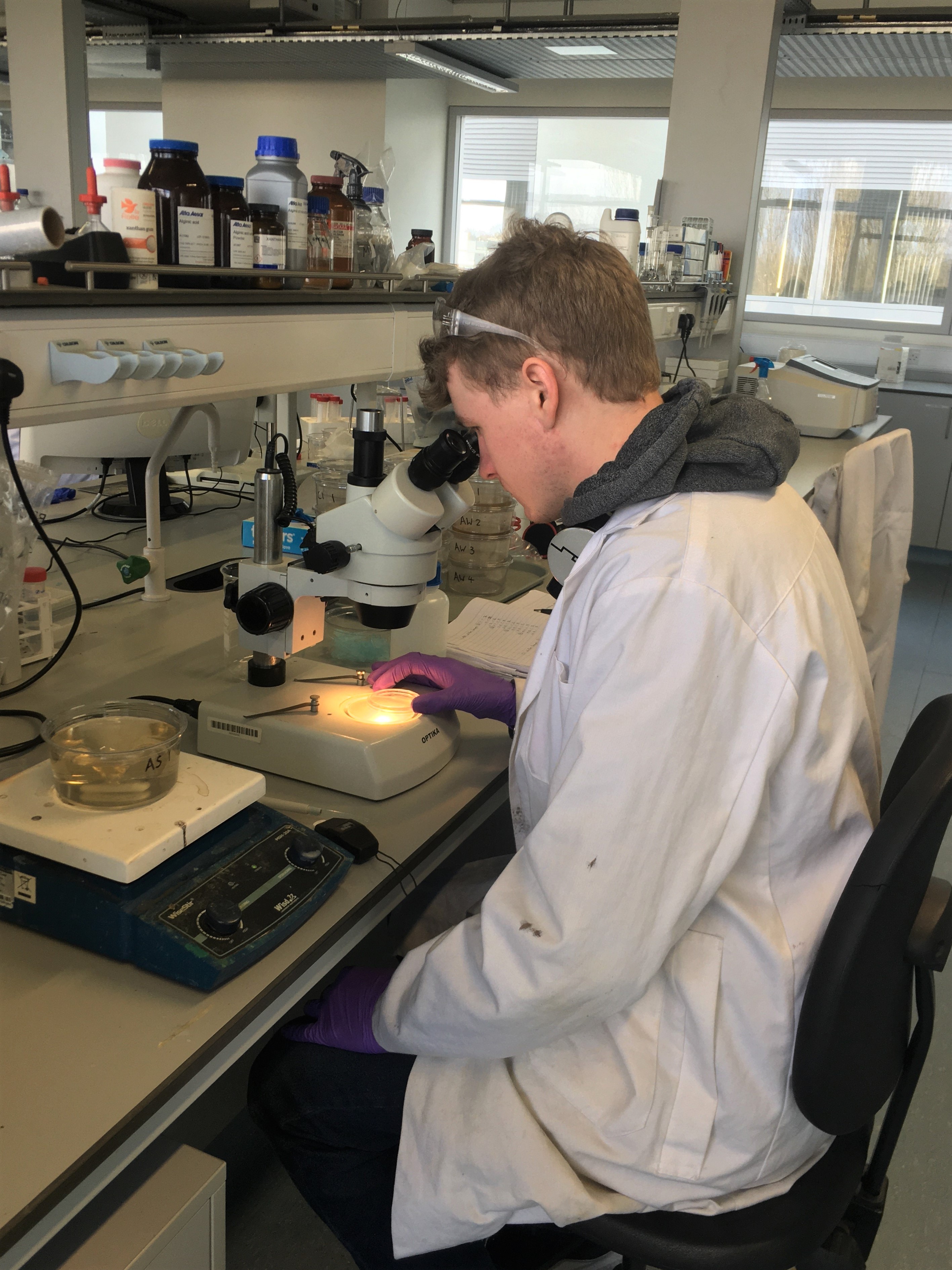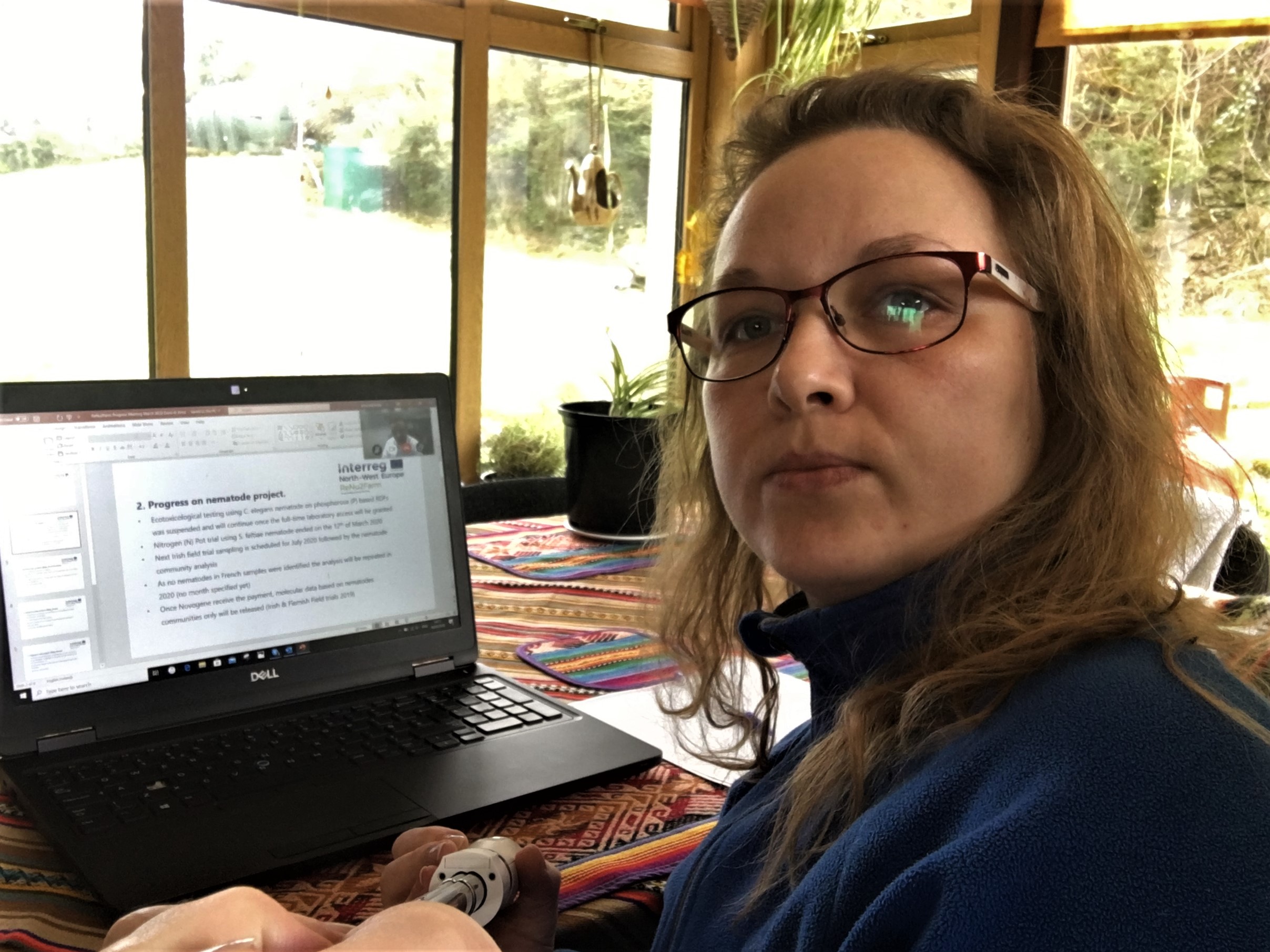As it happens for the rest of the world, so the ReNu2Farm workers are also very much challenged by the current unprecedented situation.
The ReNu2Farm partners at the Institute of Technology Carlow in Ireland were in the middle of collecting results on the project when the public health restrictions were implemented. Luckily, an experiment on possible ecotoxicological effects of the recycling derived fertilisers (RDF) that are the focus of the project, was just completed. Similarly, a major part of the analysis of the results generated from the Irish field trial, where the ecological impacts of RDF on soil bacteria, fungi and nematodes were investigated, was also completed. In IT Carlow, the project partners have undertaken the task to investigate and confirm the ecological and environmental safety of RDF. They do this by observing the effects of RDF on key soil microbiota.
Specifically, the ecotoxicological experiment employed the entomopathogenic nematode Steinernema feltiae as a test organism. This beneficial nematode naturally lives in soil and in a real-life scenario it would be an organism on which RDF may have effects. However, results have revealed that RDFs have no detrimental effect on this nematode and its life cycle in the soil, as manifested by laboratory microcosm experiments.
The Irish field work involved application of the RDF on grassland, in collaboration with the ReNu2Farm partners from Teagasc and the University of Limerick, and subsequent soil sampling to examine possible effects of RDF on soil microbiota. Workers in IT Carlow extracted DNA from soil and selectively picked these parts that are of bacterial, fungal and nematode origin. Those nucleic acids were further analysed at DNA sequence level to obtain a full view of the status of the bacterial, fungal and nematode soil communities in response to the RDF application. IT Carlow partners were happy to see that the RDF had no detrimental effects on the soil communities of these types of organisms.
These terrestrial organisms are well established as bioindicators of environmental change and this is an area that the IT Carlow partners have expertise. While any chemical analysis in the soils may give a numerical measurement of a xenobiotic agent present, the usage of environmental indicators is a much more holistic approach for scientists to know how an ecosystem fairs due to an intervention, or due to a general change in the environment. This occurs because changes in bioindicator communities reflect changes in other biotic and abiotic components in their ecosystem.
So while the lockdown is in progress, IT Carlow partners further analyse their molecular ecological results and keep holding on-line meetings in order to take advantage of the time away from the laboratory and the field to write their reports to Interreg_NWE and to also prepare their results for publication under international peer review.



